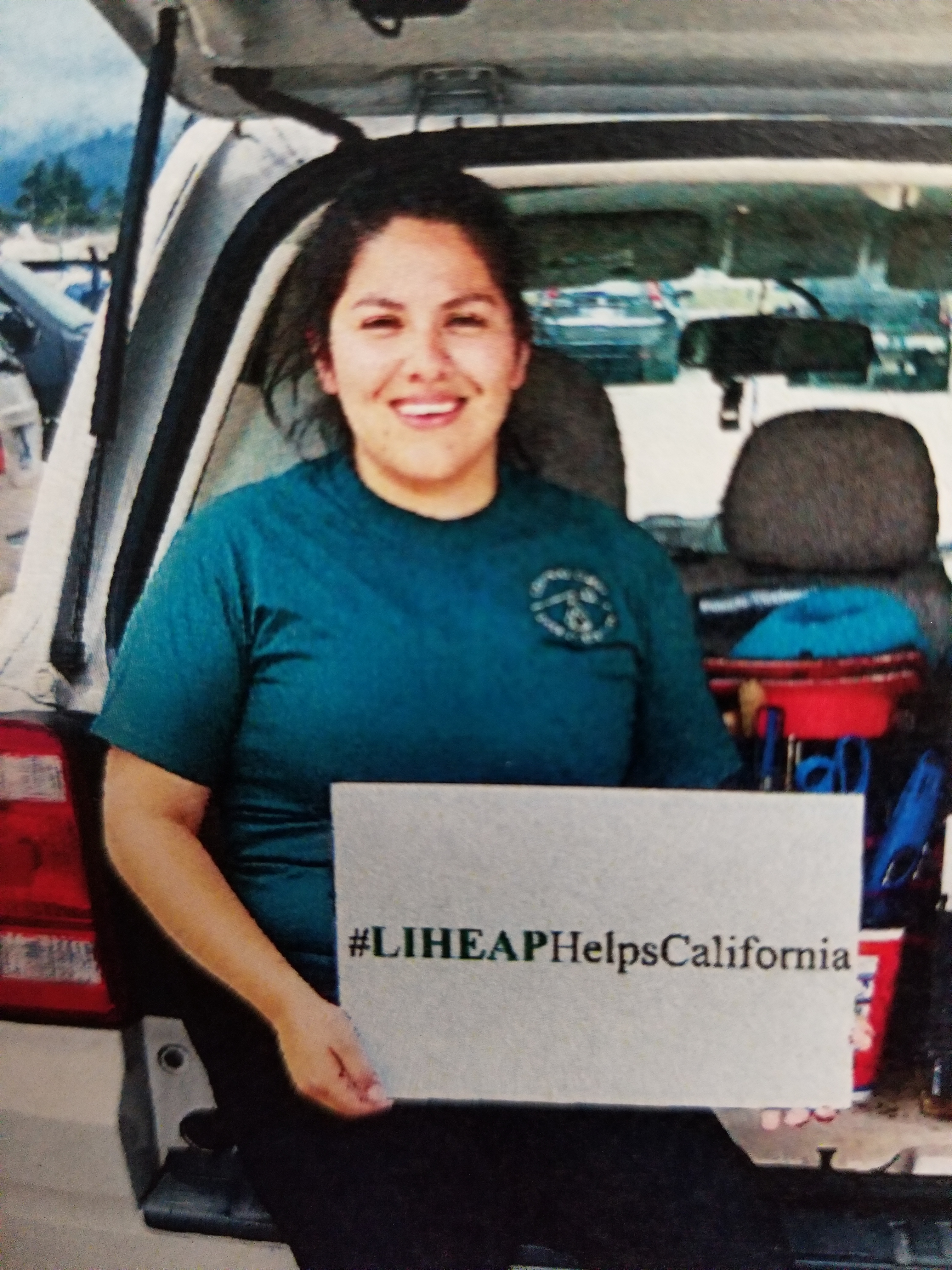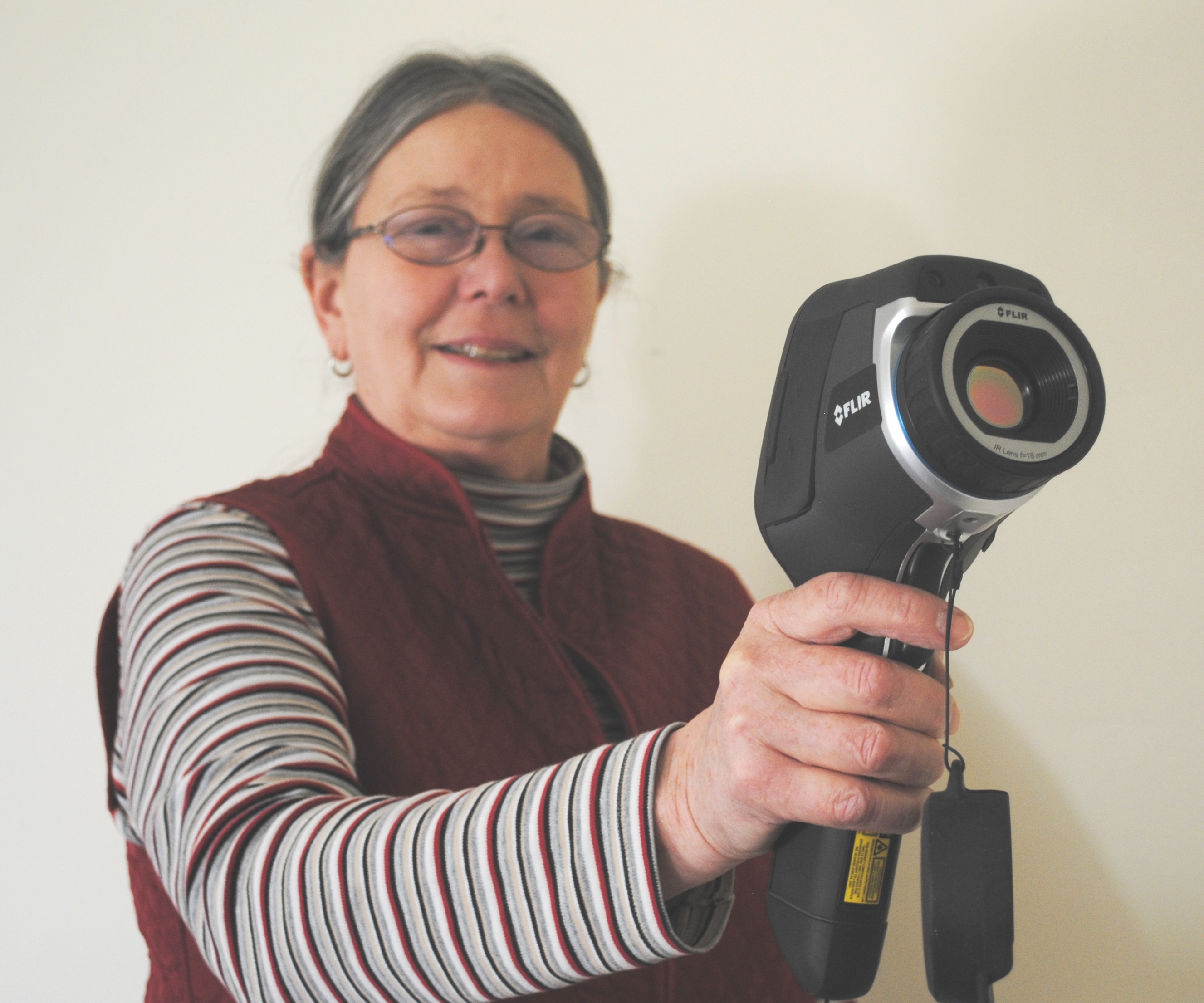The Weatherization Assistance Program (WAP) has been around for over 40 years and has served over 7.4 million households, saving families money and making their homes healthier and safer. From the very beginning of the WAP’s history, women have been a driving force in weatherization. This post is part of a month long feature for Women’s History Month. Each post will highlight a few of the women working across the country in the Weatherization Assistance Program. You can join the conversation on social media with the hashtag: #WomenOfWAP
Featured in this post…
Maria E. Ruiz- Environmental Services Assessor, California
Lillian Weston- Energy Auditor, Virginia
Cheryl Shattenbergy-Plassmann- Energy Auditor, Maine
Maria E. Ruiz
Environmental Services Assessor, Central Coast Energy Services, California

1.How did you first get interested and involved in weatherization?
Participated in an AmeriCorps/California Conservation Corps Program/Internship with CCES.
2.Tell us about your current and past roles in the WAP.
I was hired to be an environmental technician at first. I got promoted to Technician 2, in which I was working with the Assessors. I am now an Assessor myself since August 2017.
3.What is it like being a woman in weatherization? Advantages? Challenges?
It’s great at times. I love how the customers are very impressed to see women doing this type of work. I feel like they trust us in their home more than they do men. There are some physically challenging aspects of the job as well, such as lifting heavy items or tightening gas fittings.
4.Why do you work in weatherization? What about your job makes you excited to go to work in the morning?
I love to help people. I am always excited to meet new people and to explore different homes. We encounter some very amazing homes and customers with great knowledge and talent.
5.Do you have advice for other women interested in joining the weatherization field?
Never give up on yourself. Treat others the same way you would like to be treated.
Lillian Weston
Energy Auditor/Quality Control Inspector, CHP Energy Solutions, Virginia
1.How did you first get interested and involved in weatherization?
I knew people who worked on Weatherization crews in the late 1970’s and early 1980’s while I was in college. In November 1985, I was asked to come in to answer the phone for four days, and I just never left. This was at the state CAP association (VACAA), which administered the WAP program at the time. I worked to put all past and present WAP clients on a database. When use of the blower door began in 1986, I tracked pre- and post- readings, then developed a target chart for crews to use to guide them in air sealing. I also created a spreadsheet to streamline allocation of funds to sub grantees. I was hired full time in 1987 as Program Analyst.
2.Tell us about your current and past roles in the WAP.
As Program Analyst at VACAA, I was liaison with the Virginia Center for Coal and Energy Research at Virginia Tech, who VACAA contracted to conduct an evaluation of the Virginia WAP in 1989-90. I primarily worked with three local agencies on the pilot study portion of the evaluation. The purpose of the pilot study was to test new measures in the field to see if we got better energy savings for WAP clients. I next helped to develop new installation standards to implement the evaluation recommendations. In 1991-92, I worked with a private contractor to deliver training to the local agency crews to implement the changes, and to monitor these same agencies to see that these changes were properly done.
I worked at the Virginia Department of Housing and Community Development from 1993-2000 as an administrator of the program. I worked for Community Housing Partners/New River Center for Energy Research and Training (NRCERT) from 2000-2006, primarily as a trainer for local crew staff and as a presenter at conferences. I have also worked as staff and/or consultant at several local WAP agencies. I coordinated the field operations at one local agency for nine years, from 2006-2015. I returned to Community Housing Partners in 2015 working as Auditor/QCI.
3.What is it like being a woman in weatherization? Advantages? Challenges?
The biggest challenges in the earlier years were with WAP clients, who asked if I had taken a man’s job. I also felt some trepidation about working with folks outside the program, but mainly my fears were unfounded.
My experience has been that it is a pretty egalitarian environment in which to work. That working hard and knowing your stuff is what is important to your co-workers and clients. The field work is hard, but nothing that women can’t do. In Virginia, we have had women working in all aspects of the program, from crews to administrators.
With clients these days, it can be both a blessing and a curse. Many of our clients are elderly women, and I think it makes them more comfortable that the first person they have in their home from the program is a woman. The “curse” is that many of my older clients want to tell me their whole life story and that I like to listen to them. Many are home bound for the most part, with no one to talk to. It can be very difficult for me to perform my audits in a timely manner.
4.Why do you work in weatherization? What about your job makes you excited to go to work in the morning?
No matter how many houses you work on, you will never run out of “different” situations. When you get in the truck in the morning, you never know what you will find at the other end. For me, it is a combination of things. I like the “troubleshooting” aspect of auditing – figuring out how the house is built, what areas we can address to reduce the costs to heat and cool it, how to put the most money (savings) back in the pockets of our clients. I also feel that, in many cases, I am teaching clients about how their house “performs”. Many people don’t think about their home in that way. In doing this, I am clarifying their expectations about what we will be able to do for them. Most of our clients have many needs and we can’t fill all of them.
On a personal level, when I started in 1985, the work consisted mainly of caulking cracks and insulating the attic – mainly unskilled labor and low wages. In the late 1990’s, the workforce was “graying”. Thirty-two years later, we have a highly trained, highly skilled workforce. I have to have a license to audit, and everyone has to have national certifications to work in the field. Most important, younger people are working in the program. As I get closer to retirement, I feel gratified that the program is in good hands.
5.Do you have advice for other women interested in joining the weatherization field?
There are many roles to play in weatherization from field work to operational to management to administrative. All of them are available to women. If you want to work in a field that touches many lives, in fact sometimes save lives, this may be the one for you. If the glass ceiling exists, I am unaware, as I have seen more women in management and administrative roles than in the field.
Cheryl Shattenberg-Plassmann
Energy Auditor & Trainer, Western Maine Community Action

1.How did you first get interested and involved in weatherization?
Many years ago I got involved with purchasing rental property and remodeling the buildings. I found I loved inspecting houses, that evolved into wanting to know more about building science, energy efficiency, construction and construction flaws. I signed up for a DOE Energy Auditor class and the instructor for the class recommended me for a job. I have been in the field ever since 1990.
2.Tell us about your current and past roles in the WAP.
Energy Auditor, Department Manager, Trainer with a fully equipped weatherization box truck. Would travel throughout Maine to train weatherization agency contractors. I would demonstrate how to insulate, dense pack, discuss various options to choose from, best practices information and provided support when they had questions. I am a BPI Trainer & Proctor with Building Analyst, Multifamily Building Analyst, Energy Auditor, Quality Control inspector, and Healthy Home Evaluator designations.
3.What is it like being a woman in weatherization? Advantages? Challenges?
Years ago when attending training, I would be the only woman in the room. If I asked a question or made a comment during the training everyone was immediately silent and they all stared at me. When I would call people to set up an appointment for a weatherization audit they would ask me the name of the man who would be coming to their house and seemed to be surprised when I told them it would be me. In the beginning I had to work hard to convince people that I actually knew what I was doing. Things have changed quite a bit, and I love seeing more women involved in the field. The advantage of being a women is that we have the ability to make people feel comfortable, we pay attention to details, and are good listeners (I find a good majority of people want to share there life stories).
4.Why do you work in weatherization? What about your job makes you excited to go to work in the morning?
I get a lot of satisfaction in helping people, especially the elderly and low income households. Knowing that we are making their home more energy efficient, comfortable and healthier as well as saving them money. I love meeting people and finding ways to help them with needs outside the parameters of weatherization. I love the supportive staff I work with! I can honestly say that even after many years in the field I never stop learning. Each home holds a story. I recall the time I had a young intern with me and I was inspecting the wall insulation in a homes bedroom walls. As I was scanning the wall my infrared camera picked up a peculiar image. The image looked like a perfect outline of a woman. Well, the homeowner was standing in the room with us and asked to see the image. She looked at the infrared picture and her face turned white and she started to cry. I asked her if she was okay. She said “my mother died in this room.” I looked at her and to quickly calm her said “oh, this is great, this must be your mother watching over you and she just wants to let you know she is here”. She smiled and stopped crying. I sent her the picture to share with her family. Was it a void in the insulation or was it her mom?
5.Do you have advice for other women interested in joining the weatherization field?
It is a great field and you will enjoy working with a wide variety of clients and contractors. You can’t be squeamish since you have to crawl around in attics and creepy crawl spaces. Be strong and confident, be willing to learn and share best practices.





